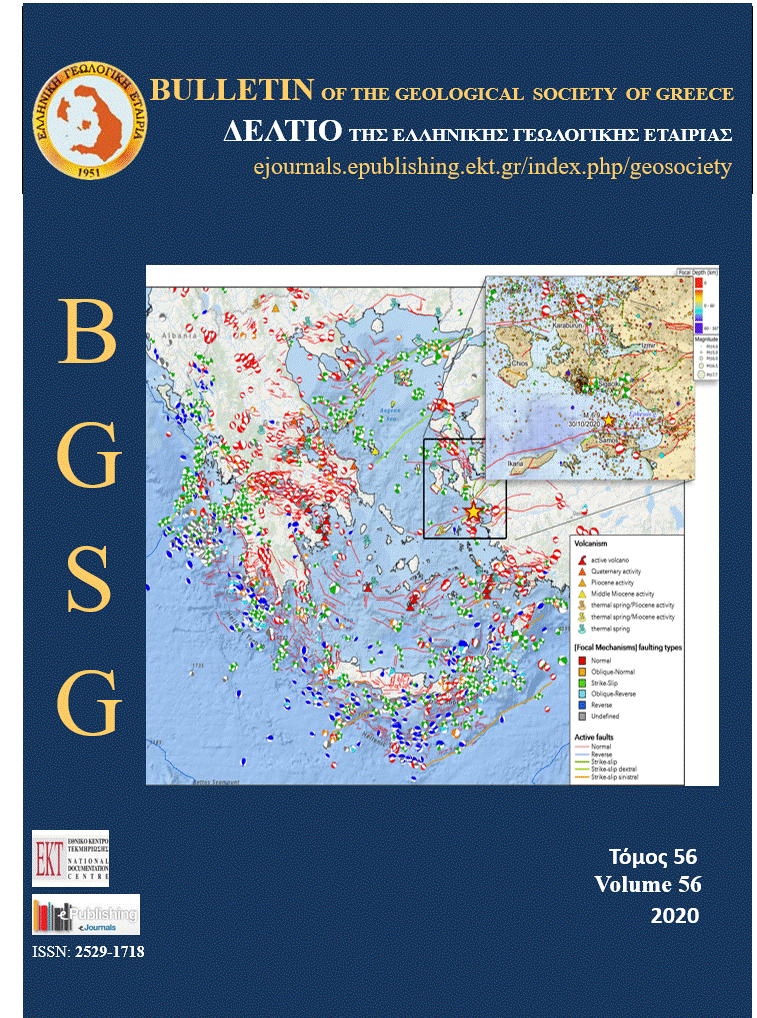Geology and deformation of the Serbo-Macedonian massif in the northern part of the Athos Peninsula, Northern Greece: Insights from two detailed cross-sections

Abstract
The Athos peninsula occupies the south-eastern part of the wider Chalkidiki peninsula in Central Macedonia, Greece. It is mainly built up by crystalline rocks belonging to the Serbo-Macedonian massif, traditionally constituting, along with the Rhodope massif, the Hellenic hinterland. According to the basic geological map of the peninsula, its northern part is mainly composed of marbles grouped into the Kerdyllion Unit, and biotite gneisses and two-mica gneisses grouped into the Vertiskos Unit of the Serbo-Macedonian massif, whereas the contact between the units is considered as a normal contact, although it has been re-evaluated as tectonic later on. Moreover, amphibolites and ultramafic rocks exist along with the previously mentioned rocks, making the geology and relationship between the two units much more complicated. Two detailed cross-sections and structural analysis permit us to revise the geology of the region concluding that the marbles, the amphibolite gneisses, formerly independent amphibolites, and the biotite gneisses belong to the Kerdyllion Unit that is strongly characterized by migmatization and anatexis, whereas the Vertiskos Unit is represented predominantly by two-mica gneisses that were not extensively, if at all, affected by these phenomena. Isoclinal folding and intense shearing with an overall top-to-the-S sense of shear resulted in the main fabric of the rocks and the mylonitic shear zone between the units. More importantly, the two-mica gneiss of the Vertiskos Unit is sandwiched between the rocks of the Kerdyllion Unit. We attribute both isoclinal folding and shearing to a Mesozoic tectonic event associated with an amphibolite facies metamorphism, leading to an Alpine reworking of the Serbo-Macedonian massif. This Alpine reworking continues during Eocene times with an ENE-WSW compression, giving rise to asymmetric to inverted folds, co-axially refolding pre-existing fabrics and structures. Our work strongly suggests that the overall structure and tectono-stratigraphy concerning the Vertiskos and Kerdyllion Units as well as the contact between them should not be based on the existence of the marbles, as traditionally followed up till now, but on the migmatization and anatexis processes that are almost absent from the rocks of the Vertiskos Unit.
Article Details
- How to Cite
-
Neofotistos, P. G., Tranos, M. D., & Heilbronner, R. (2020). Geology and deformation of the Serbo-Macedonian massif in the northern part of the Athos Peninsula, Northern Greece: Insights from two detailed cross-sections. Bulletin of the Geological Society of Greece, 56(1), 167–186. https://doi.org/10.12681/bgsg.22529
- Issue
- Vol. 56 No. 1 (2020)
- Section
- Structural Geology

This work is licensed under a Creative Commons Attribution-NonCommercial 4.0 International License.
Authors who publish with this journal agree to the following terms:
Authors retain copyright and grant the journal right of first publication with the work simultaneously licensed under a Creative Commons Attribution Non-Commercial License that allows others to share the work with an acknowledgement of the work's authorship and initial publication in this journal.
Authors are able to enter into separate, additional contractual arrangements for the non-exclusive distribution of the journal's published version of the work (e.g. post it to an institutional repository or publish it in a book), with an acknowledgement of its initial publication in this journal. Authors are permitted and encouraged to post their work online (preferably in institutional repositories or on their website) prior to and during the submission process, as it can lead to productive exchanges, as well as earlier and greater citation of published work.


